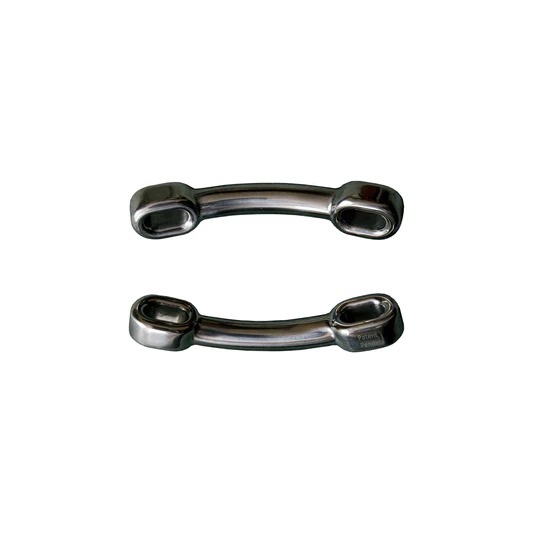What is the Polishing Process and How Does it Work?
With advancements in CNC machining and manufacturing, the polishing process has evolved significantly, encompassing techniques such as mechanical polishing, chemical polishing, electrolytic polishing, ultrasonic polishing, fluid polishing, magnetic grinding and polishing, EDM ultrasonic composite polishing, among others.
Among these, mechanical polishing, chemical polishing, and electrochemical polishing are most common. Different industries have varied requirements for surface polishing of metal parts made from different materials. Hence, the polishing methods and machinery required for metal surface treatment can vary.
What Exactly is the polishing process?
Polishing involves utilizing mechanical, chemical, or electrochemical methods to reduce the surface roughness of a workpiece, resulting in a bright and smooth surface. This process utilizes polishing tools, abrasive grains, or other polishing media to refine the surface of metal parts.
Working Principles of Common Polishing Processes
Mechanical Polishing:
Mechanical polishing involves removing surface protrusions on metal parts through cutting or plastic deformation to achieve a smooth surface. Typically, abrasive tools such as whetstone sticks, wool wheels, and sandpaper are utilized, with manual operation being the primary method.
For applications demanding high surface quality, ultra-precision polishing is employed. This technique utilizes specialized abrasive tools pressed onto the metal part’s surface in a polishing liquid containing abrasives, rotating at high speeds. Ultra-precision polishing can achieve a surface roughness as fine as Ra0.008μm, making it the preferred method for optical lens molds and other precision components.
Chemical Polishing:
Chemical polishing involves dissolving the surface’s convex areas in a chemical medium, leaving behind a smooth surface. This method is suitable for polishing complex-shaped workpieces and can handle multiple metal parts simultaneously, offering high efficiency. The surface roughness achieved through chemical polishing typically ranges around Ra10μm.
Electrolytic Polishing:
The fundamental principle of electrolytic polishing resembles that of chemical polishing, where selective dissolution of surface protrusions results in a smoother surface. Electrolytic polishing, however, eliminates the influence of cathode reaction compared to chemical polishing, resulting in a more effective polishing process.
Other Finishing Services Available
Our One-Stop Finishing Excellence
Benefit from Fuyu’s industry-leading expertise, offering unparalleled quality and convenience through our comprehensive, one-stop finishing services.
Anodizing type II (Glossy)
Anodizing type II (Matte)
Anodizing Type III Hard anodizing
LEARN MORE
Zinc Plating
Chrome Plating
Nickel Plating
Copper Plating
Electroless Nickel Plating
Tin Plating
Gold Plating
Silver Plating
LEARN MORE
Mechanical Polishing
Chemical Polishing
Electrolytic Polishing
LEARN MORE
Glass Bead Blasting
Ceramic Bead Blasting
Plastic Bead Blasting
Steel Shot Blasting
Stainless Steel Bead Blasting
LEARN MORE
Powder coating, a dry finishing process, involves the electrostatic charging and spraying of finely ground particles of pigment and resin onto surfaces. Upon curing under heat, this method produces a resilient, uniform, and aesthetically pleasing finish, gaining popularity for its environmental friendliness and superior performance benefits.
LEARN MORE
Black oxide, a conversion coating in the realm of surface finishing, chemically engenders a protective black layer on metals, predominantly focusing on ferrous alloys. This process not only boosts corrosion resistance but also diminishes light reflection, adding a touch of decorative appeal. Administered through either hot or cold processes, the finish is frequently sealed with wax or oil, elevating both durability and protection.
Chromate conversion coating, also recognized as Alodine or Chemfilm, serves as a surface treatment tailored for aluminum and its alloys. This process establishes a thin yet protective chromate layer, elevating corrosion resistance, fostering paint adhesion, and ensuring electrical conductivity. Widely employed in aerospace and automotive industries, it not only provides enhanced functionality but also delivers a decorative finish while maintaining minimal dimensional alterations.
DLC (Diamond-Like Carbon) coating stands as a nanocomposite finish designed to provide materials with a robust and wear-resistant surface. Emulating the properties of natural diamond, it delivers exceptional lubricity, corrosion resistance, and a minimized friction coefficient. This makes DLC coating particularly well-suited for applications in the automotive industry, tools, and precision components.
In the realm of surface finishing, brushing employs abrasive brushes to craft fine and uniform lines on metal surfaces. This mechanical process not only elevates the appearance but also conceals defects and primes surfaces for coatings. With the capability to provide an array of textures, ranging from short to long grains, brushing ensures aesthetic refinement tailored for diverse applications.
Titanium anodizing is a surface finishing process designed to enhance the oxide layer on titanium components. This modification not only boosts corrosion resistance and biocompatibility but also introduces vibrant, interference-based colors without the need for dyes or pigments. Widely adopted in medical devices and aerospace applications, this process seamlessly combines aesthetics with functional advantages.
Passivation is a surface finishing process that treats stainless steel with a mild oxidant, removing iron contaminants and enhancing its natural oxide layer. This strengthens corrosion resistance and prevents unwanted reactions in environments like the medical, food, and aerospace industries.
Conclusion
Polishing processes such as mechanical, chemical, and electrolytic methods play crucial roles in surface treatment for metal parts. The selection of the appropriate polishing process depends on the specific material characteristics. It’s important to consider the advantages and disadvantages of each method to ensure the quality of the polishing outcome.
FAQs – About Polishing Process
Q1: What is the primary purpose of the polishing process in manufacturing?
A1: The primary purpose of the polishing process is to improve the surface finish of a part, enhancing its appearance, reducing surface roughness, and preparing it for further finishing processes.
Q2: What materials can be polished in the manufacturing process?
A2: Various materials can be polished, including metals (such as aluminum, steel, and brass), plastics, and even some ceramics, depending on their properties and the desired outcome.
Q3: What are the common methods used in the polishing process?
A3: Common polishing methods include mechanical polishing, chemical polishing, electrochemical polishing, and ultrasonic polishing. Each method has its specific applications and benefits.
Q4: What are the key factors affecting the quality of the polished finish?
A4: Key factors include the initial condition of the surface, the polishing compound used, the type of polishing equipment, the duration of the process, and the skill of the operator.
Q5: What are the benefits of a well-polished surface?
A5: A well-polished surface can provide improved aesthetics, increased corrosion resistance, reduced friction, lower contamination levels, and better surface properties for coating or plating.
Q6: Can polishing be automated, and what are its advantages?
A6: Yes, polishing can be automated using robotic systems. The advantages include consistent quality, faster processing times, reduced labor costs, and the ability to handle complex shapes and surfaces.


